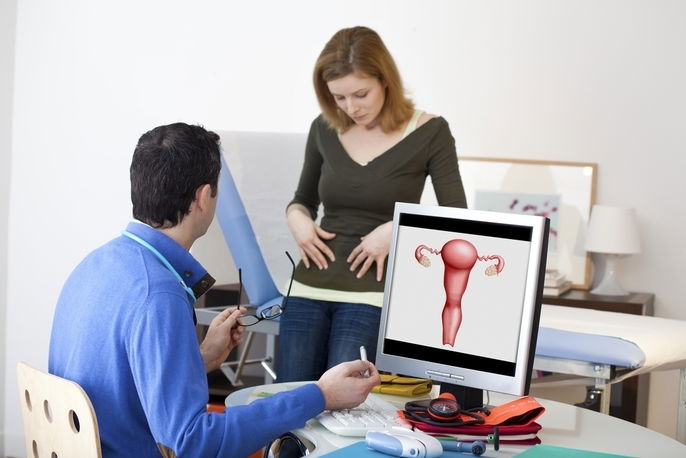What is it:
A vaginal cyst is a small sac of air, liquid or pus that develops on the lining of the inner vagina. A cyst can grow due to by mild injuries, accumulation of liquid within a gland or a tumor.
The most common types of vaginal cysts are those that develop within the Bartholin’s gland, which is responsible for excreting lubricant fluid in the vagina. This type of cyst can usually be visualized at the vaginal opening and looks like a small ball.
Most vaginal cysts do not cause any symptoms, however, if they do reach a certain size, they can cause discomfort during sex or when using a tampon. If symptoms are noted, the gynecologist may recommended a minor procedure to remove the cyst and relieve symptoms.

Main symptoms
In most cases, vaginal cysts do not cause any signs of symptoms, however some women may notice symptoms like:
- The presence of a lump at the vaginal opening or along the vaginal wall
- Pain or discomfort during sex
- Difficulty and discomfort when inserting a tampon
These symptoms may also be sign of other problems in the area, however. Therefore, if these symptoms last for over 3 days, you should see a gynecologist to identify the cause and start appropriate treatment.
Possible causes
The most common cause of a vaginal cyst is the clogging of a gland or duct, resulting in an accumulation of fluid inside and the formation of a lump. This is what happens in cases of Bartholin cysts or sebaceous cysts.
A cyst in the vagina can also occur due to vaginal wall trauma, which can happen during childbirth, for example. This is typically what happens in cases of Gartner cyst or Mullerian cyst.
Another cause of a vaginal cyst is sexually transmitted infections (STIs), such as gonorrhea or chlamydia.
Confirming a diagnosis
The best way to confirm the presence of a cyst is to seek a consult with your doctor or gynecologist. They will also rule out other problems that may be causing vaginal changes, like HPV, and start treatment as necessary.
Types of vaginal cysts
There are different types of vaginal cysts that vary depending on where they are located. The main types include:
- Inclusion cysts: These are the most common types of cysts, and typically emerge on the vaginal wall following a mild injury, like surgery or delivery.
- Bartholin cyst: This cyst is noted at the vaginal opening, and occurs due to an accumulation of liquid in one or both of the Bartholin’s glands.
- Gartner cyst: This cyst generally grows along the vaginal wall and is caused by an accumulation of liquid within the vaginal canal. It usually resolves in most women after birth.
- Sebaceous cyst: This type of cyst develops when the sebaceous glands, which produce oil on the outside of the vagina, become obstructed. It leads to the formation of a lump filled with a yellow-white fatty substance.
In addition to these cysts, there is also a Mullerian cyst, which usually resolves following birth, but can persist in many women well into adulthood.
It is always best to consult your doctor or gynecologist whenever you notice any changes to the genital area.
Treatment options
Vaginal cysts should generally be assessed, however most cases are comprised of small, asymptomatic cysts that resolve on their own without any treatment.
Cysts that are large and present with symptoms may require a small surgical procedure to drain the fluid inside the cyst.
In rarer cases, the cyst may also develop into an infection, which may require antibiotic treatment.
Possible complications
Generally, vaginal cysts do not cause complications, as they remain small and do not tend to grow. However, large cysts can cause pain or discomfort, especially during sex or with tampon use.





























